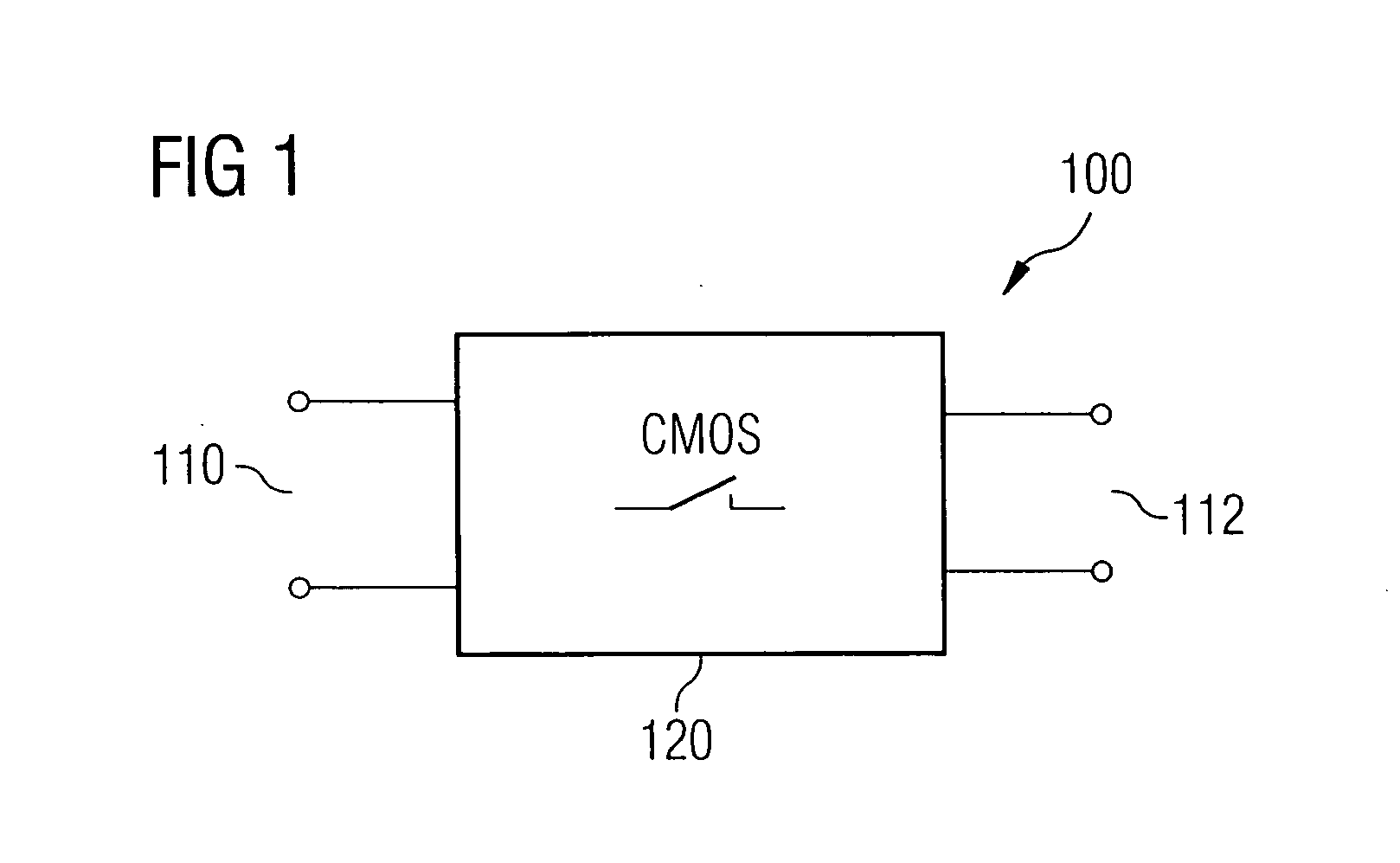Matching network
a technology of matching network and switch, applied in the field of matching network, can solve the problems that the switch can be mechanically integrated into the matching network particularly unproblematically, and achieve the effect of very fast switch, good or best possible antenna matching, and wearless
- Summary
- Abstract
- Description
- Claims
- Application Information
AI Technical Summary
Benefits of technology
Problems solved by technology
Method used
Image
Examples
first embodiment
[0050]FIG. 1 shows a schematic illustration of an inventive matching network according to the present invention. The matching network of FIG. 1 is designated by 100 in its entirety and has an input port 110 for receiving high-frequency power as well as an output port 112. The matching network comprises a switchable impedance transformation circuit 120, which is connected between the input port and the output port. In a high-frequency path, the impedance transformation circuit 120 comprises a CMOS switch, which has a first switching state and a second switching state. In the first switching state, for example, a CMOS switch is closed or low-resistively conductive, while in the second switching state, the CMOS switch is opened or high-resistive, respectively. The impedance transformation circuit 120 (also referred to as impedance transformation network) is further implemented to match a (given) first impedance applied to the output port on the input side to a first predetermined imped...
second embodiment
[0055]FIG. 2a shows a circuit diagram of the inventive matching network according to the present invention. The matching network shown in FIG. 2a is designated by 200 in its entirety. The matching network 200 has a π switching configuration. The matching network 200 has an input port 210 as well as an output port 212. In the shown embodiment, the signals applied to the input port 210 and the output port 212 are related to a reference potential GND. In other words, the input port 210 and the output port 212 form unbalanced ports. A first adjustable impedance element 220 (also referred to as impedance transformation element or briefly element) is connected between the input port 210 (or a conductor of the input port, respectively) and the reference potential GND. A second adjustable impedance element 222 is connected between the input port 210 and the output port 212. A third adjustable impedance element 224 is further connected between the output port 212 (or a conductor of the outpu...
third embodiment
[0061]FIG. 2b shows further a circuit diagram of an inventive matching network according to the present invention. The matching network of FIG. 2b is designated by 250 in its entirety. The matching network 250 has an input port 260 and an output port 262, which are here both exemplarily shown as unbalanced ports, with regard to a reference potential GND. An adjustable impedance element 270 is connected between a terminal of the input port 260 and a central node 272. A second adjustable impedance element 274 is further connected between the center node 272 and the terminal of the output port 262. Further, a third adjustable impedance element 276 is connected between the center node 274 and the reference potential GND. Thus, the three adjustable impedance elements 270, 274, 276 form a T circuit, which is connected between the input port 260, the output port 262 and the reference potential GND. The matching network 250 can also be described by a schematic illustration 290.
[0062] It sho...
PUM
 Login to View More
Login to View More Abstract
Description
Claims
Application Information
 Login to View More
Login to View More - R&D
- Intellectual Property
- Life Sciences
- Materials
- Tech Scout
- Unparalleled Data Quality
- Higher Quality Content
- 60% Fewer Hallucinations
Browse by: Latest US Patents, China's latest patents, Technical Efficacy Thesaurus, Application Domain, Technology Topic, Popular Technical Reports.
© 2025 PatSnap. All rights reserved.Legal|Privacy policy|Modern Slavery Act Transparency Statement|Sitemap|About US| Contact US: help@patsnap.com



